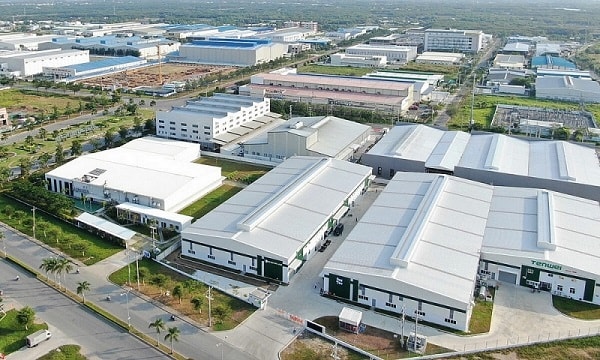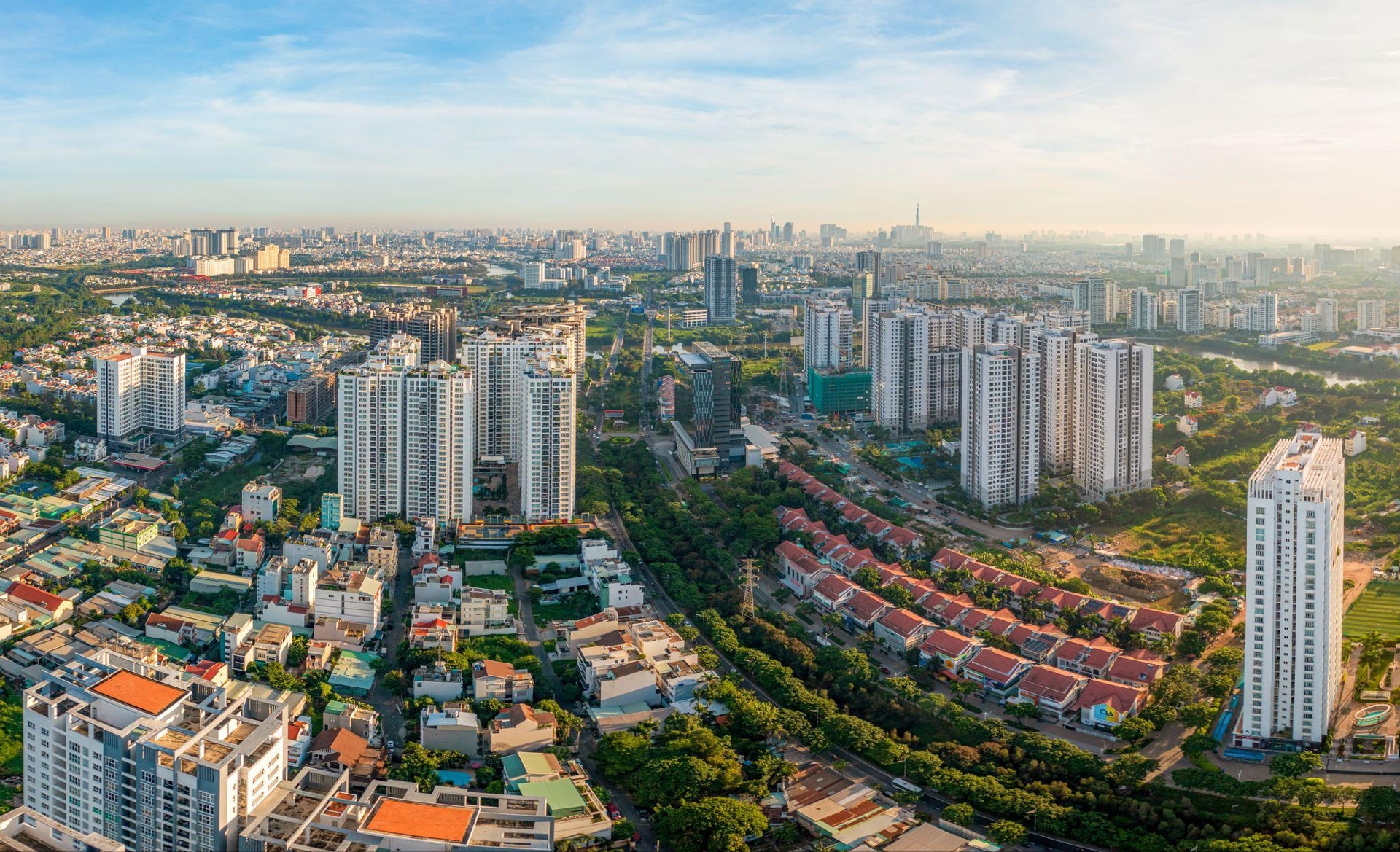How will US tariffs impact Vietnam's industrial real estate?
Instead of expanding their investments, many foreign-invested enterprises (FDIs) are leaning towards delaying decisions, closely monitoring the situation, and waiting for official announcements from the U.S.
On April 2, U.S. President Donald Trump officially unveiled a new reciprocal tariff policy aimed at tightening import activities into the U.S.

Industrial real estate will be directly impacted by the U.S. tariff policy.
Risk of Capital Flow Shifts
According to the announcement, starting April 5, all goods imported into the U.S. will be subject to a 10% tariff. Notably, from April 9, a higher tariff rate will apply to countries with significant trade surpluses with the U.S.—Vietnam being among those hit hardest, facing a tariff rate of up to 46%.
This is seen as a bold move to rebalance the U.S. trade deficit with the rest of the world. However, it has also sparked serious concerns among the business community, especially among foreign-invested enterprises operating in Vietnam—where the U.S. remains one of the key export markets.
In response, many FDIs—particularly those from the U.S., China, and Hong Kong—are considering relocating parts of their operations, especially product finishing and packaging, to lower-tariff countries like India or Indonesia to avoid high duties when exporting to the U.S.
This shift could pose significant challenges for Vietnam’s industrial real estate and logistics sectors.
According to Mr. Le Trong Hieu, Senior Director and Head of Advisory & Transaction Services at CBRE Vietnam:
“Vietnam’s property market will undoubtedly be affected if the U.S. officially imposes a 46% tariff on Vietnamese goods. The electronic component assembly sector, in particular, will be hardest hit, as the U.S. suspects Vietnam is being used as a transshipment hub to circumvent tariffs.”
Currently, the impact remains mostly psychological, Mr. Hieu noted, as businesses are still hopeful for negotiation efforts from the Vietnamese government to reduce the tax rate.
“A cautious scenario is that the tariff will be adjusted downward, with some goods exempted or subjected only to standard tax rates,” he added.
CBRE, as a member of the American Chamber of Commerce in Vietnam, has submitted a petition to the U.S. government, proposing a delay in the implementation of the new tariff policy to allow time for dialogue and policy adjustments.
Investor caution is also spreading among industrial land and warehouse tenants. Rather than expanding, many are holding off on new investments, awaiting official decisions from the U.S.
Ripple Effects: From Industrial Parks to the Housing Market
CBRE’s analysis indicates that a drop in FDI—particularly from Chinese-speaking investors such as those from China, Taiwan, and Hong Kong—will trigger a chain reaction across various sectors. One of the most affected could be the residential real estate market, where these investors have traditionally been key renters and buyers.

The rental housing market could be indirectly affected
The office market, however, is expected to be less impacted since Chinese tenants hold only a minor share in this segment. Meanwhile, the retail market is still witnessing expansion by Chinese businesses, who are targeting Vietnam's domestic consumption and thus remain largely unaffected by U.S. trade policies.
On a more positive note, Mr. Hieu believes the new tariff policy also presents opportunities for market adjustment and restructuring.
First, the reduction in Chinese customers exporting to the U.S. will pressure industrial park developers to reassess their land and warehouse rental prices, which are currently high compared to regional competitors like Indonesia and Thailand.
Second, this is a chance for developers to diversify their client base and reduce reliance on any single market—particularly China. At the same time, the Vietnamese government has tightened regulations on Export Processing Enterprises (EPEs), aiming to curb transshipment practices that add little value to the domestic economy and to minimize risks of being seen by the U.S. as a mere transit hub.
In the short term, Mr. Hieu forecasts that industrial park developers will adopt a cautious strategy—delaying project timelines and postponing new industrial park launches until further clarity is provided by the U.S. In the long term, the logistics and warehouse rental markets are likely to adjust in both pricing and scale, with more M&A activities to restructure capital and assets.
Another challenge facing developers involves green industrial park projects, which require significant investment and are expected to attract FDI flows shifting from China. The U.S. tariff hike may dampen these expectations in the medium to long term.
Nonetheless, CBRE experts believe that green industrial parks remain a necessary and globally aligned model for sustainable development. Large-scale projects like Pandora and Lego in the VSIP 3 industrial park (Binh Duong) are prime examples of methodical investments aimed at sustainability and serving global markets—not just the U.S. or China. Therefore, these parks are seen as lower-risk and still capable of attracting high-quality FDI.








